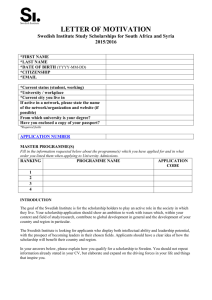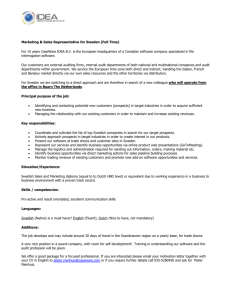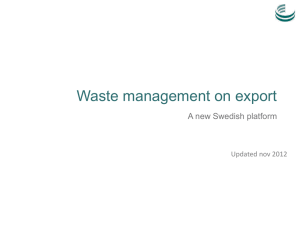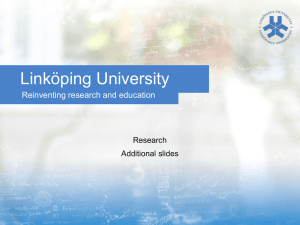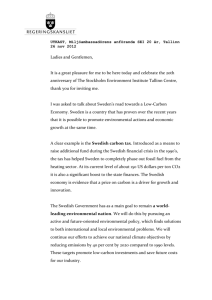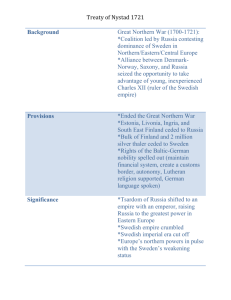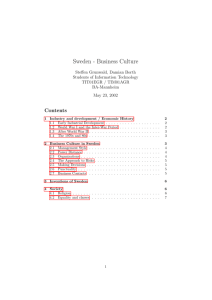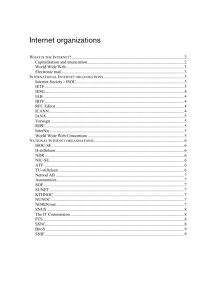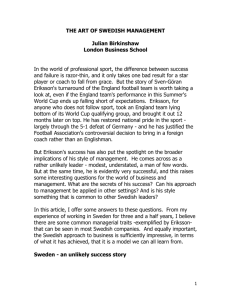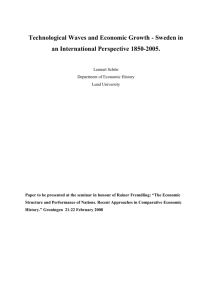Lecture 1 – Introduction: Sweden and the financial crisis
advertisement
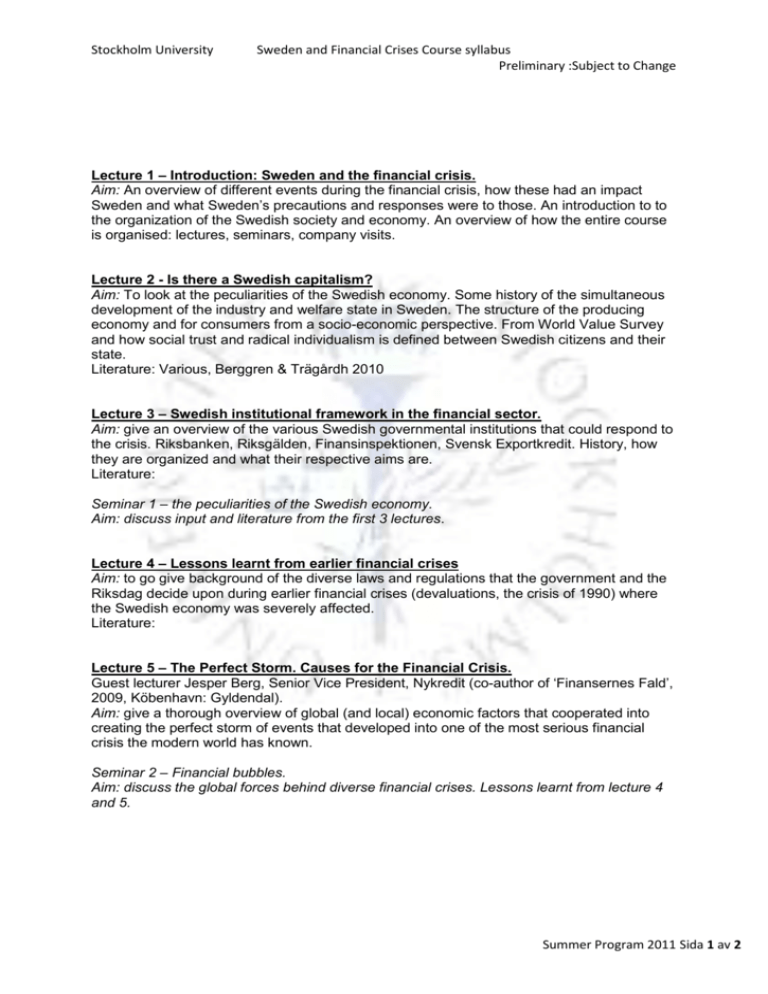
Stockholm University Sweden and Financial Crises Course syllabus Preliminary :Subject to Change Lecture 1 – Introduction: Sweden and the financial crisis. Aim: An overview of different events during the financial crisis, how these had an impact Sweden and what Sweden’s precautions and responses were to those. An introduction to to the organization of the Swedish society and economy. An overview of how the entire course is organised: lectures, seminars, company visits. Lecture 2 - Is there a Swedish capitalism? Aim: To look at the peculiarities of the Swedish economy. Some history of the simultaneous development of the industry and welfare state in Sweden. The structure of the producing economy and for consumers from a socio-economic perspective. From World Value Survey and how social trust and radical individualism is defined between Swedish citizens and their state. Literature: Various, Berggren & Trägårdh 2010 Lecture 3 – Swedish institutional framework in the financial sector. Aim: give an overview of the various Swedish governmental institutions that could respond to the crisis. Riksbanken, Riksgälden, Finansinspektionen, Svensk Exportkredit. History, how they are organized and what their respective aims are. Literature: Seminar 1 – the peculiarities of the Swedish economy. Aim: discuss input and literature from the first 3 lectures. Lecture 4 – Lessons learnt from earlier financial crises Aim: to go give background of the diverse laws and regulations that the government and the Riksdag decide upon during earlier financial crises (devaluations, the crisis of 1990) where the Swedish economy was severely affected. Literature: Lecture 5 – The Perfect Storm. Causes for the Financial Crisis. Guest lecturer Jesper Berg, Senior Vice President, Nykredit (co-author of ‘Finansernes Fald’, 2009, Köbenhavn: Gyldendal). Aim: give a thorough overview of global (and local) economic factors that cooperated into creating the perfect storm of events that developed into one of the most serious financial crisis the modern world has known. Seminar 2 – Financial bubbles. Aim: discuss the global forces behind diverse financial crises. Lessons learnt from lecture 4 and 5. Summer Program 2011 Sida 1 av 2 Stockholm University Sweden and Financial Crises Course syllabus Preliminary :Subject to Change Lecture 6 – Laws, tools and programmes responding to the crisis of 2008 Aim: the give an understanding of how laws and regulations were implemented as instruments addressing problem unfolded by the crisis. Which institutions could work with which type of instruments, what instruments had a more or less efficient impact. Visit one financial institution who administered some of the above tools (FI, Riksgälden…) Aim: let students get insight into the practicalities of working with the above instruments, from the regulative side. Lecture 7 – Swedish banks and financial institutions handling the crises. Aim: to go understand how a selected number of Swedish institutions handled the crisis. How they mixed diverse guaranties and help with their own particular problems. Literature: Dahl Seminar 3 – The case of Carnegie. Aim: the student prepare a case study of how Carnegie was overtaken by the Swedish state, through Riksgälden, how the case was handled and how Carnegie became privately owned again. Literature: newspaper articles. Visit one bank who actively responded to the crisis. Aim: let students get understanding of how a bank adapted to the crisis and worked with the Swedish types of regulations. Lecture 8 – Wrap-up. Aim: lessons learnt? Examination: take home exam. Summer Program 2011 Sida 2 av 2

